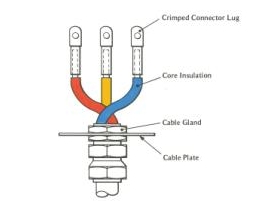The course begins with an overview of professionalism copper transmission principles and general safety practices associated with working with copper cabling.
Copper cable termination fundamentals.
Terminations in addressable fire initiation circuits.
In this video you ll learn about the different standards associated with copper cabling.
But also the termination of those cables.
This article applies the fundamentals of addressable initiation circuit termination.
The wiring and termination of conventional initiation circuits are virtually identical to nac circuits.
This paper provides an overview of best practices for terminating copper cabling and is intended as a reference source to give both experienced and new installers a solid grounding in the proper fundamentals theory methods and tools necessary for creating robust copper lan connections.
Termination is by installing connectors directly on the ends of the fibers primarily using adhesive technology or occasionally some other variety of termination method.
Focus on the fundamentals of shielded mv power cable.
Fundamentals in wiring are the same for all aspects of a fire alarm system.
Fundamentals of wire terminations addressable initiation circuits fundamentals.
Testing is done by a source and meter but every installer should have a flashlight type tracer to check fiber continuity and connection.
The grounds are common and each positive wire goes to its own termination point.
This ensures a solid connection between the copper conductor and terminating clip.
Fiber network cables your cabling.
Network termination points the type of copper cables you use on your network is important.
In addition only a minimum of cable jacket shall be removed.
All conventional initiation circuits wire the same.
Optical fiber connectors next.
If you have not read the fundamentals of terminating nac circuits please read first then return here.
In this video you ll learn the fundamentals of twisted pair cabling copper cable categories cable termination standards and much more.
The connecting hardware used for copper cabling shall be installed to provide minimal signal impairment by preserving wire pair twists as closely as possible to the point of mechanical termination by not changing the original twist see en 50173.
Copper network cabling is one of the most popular ways to connect our computing devices but not every copper cable is created alike.
A significant amount of course time will then be spent on bicsi best practices for the installation termination and testing of copper cable.





























